Actually, Indians don’t eat much naan? What is naan?
2025/09/26 This site contains advertisements. Category: Special-feature
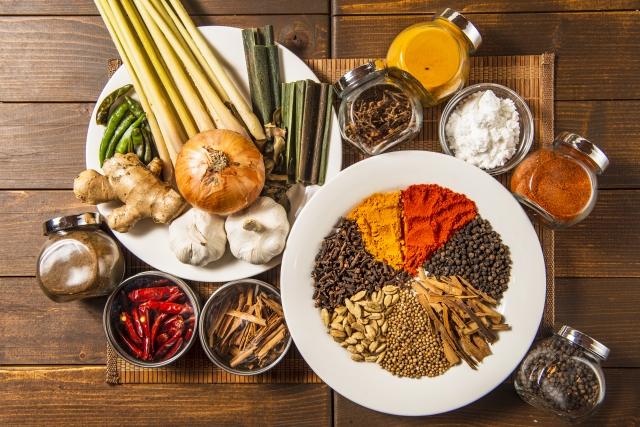
Naan is a staple in Indian restaurants in Japan, but in fact it’s not commonly eaten in average Indian households. What Indians eat every day isn’t naan, but a bread dish called chapati. In addition to naan and chapati, India also has a variety of other bread dishes.
In this article, we’ll explain why chapati is eaten instead of naan in India, as well as introduce other types of bread besides naan and chapati, and recipes you can make at home.
What is Naan?
Naan is a type of flatbread, widely known for being eaten with Indian curry. Made primarily from wheat flour, it’s fermented and then baked, typically inside a tandoor oven, at high temperatures. It has a crispy exterior and a chewy, airy interior. Naan is said to have originated in India, but is also eaten in Iran, Pakistan, Afghanistan, and other countries.
How long has naan been eaten in India?
Naan is an essential ingredient in Indian curry. Its history is actually quite long, dating back approximately 7,000 to 8,000 years, making it one of the oldest breads in the world. It spread from Persia (present-day Iran) to India, where it developed into its current form through a fusion of various cultures. It then spread to Mesopotamia, ancient Egypt, and the Indian subcontinent, where unique spices and cooking methods were added in each region, resulting in its current form.
In India, naan developed as a royal dish in northern India and is characterized by being baked in a high-temperature oven called a tandoor. However, since few households own tandoor ovens, naan is considered a luxury food eaten on special occasions. In Japan, naan has become widely known along with the spread of Indian curry. The number of restaurants where you can easily eat authentic naan is increasing, and there are also many easy recipes for making it at home.
The Origin of Naan
Naan is thought to have originated in Persia, dating back several thousand years before Christ. It is thought to have originally been a flatbread made from flour and water, but as it spread to Mesopotamia and ancient Egypt, the ingredients became more complex and it became a delicious accompaniment to a variety of curries and stews. As it spread to the Indian subcontinent, a unique method of baking in a high-temperature oven called a tandoor was established. Baking at high temperatures in the tandoor gives naan its distinctive fragrant flavor and a crispy outside and fluffy inside texture.
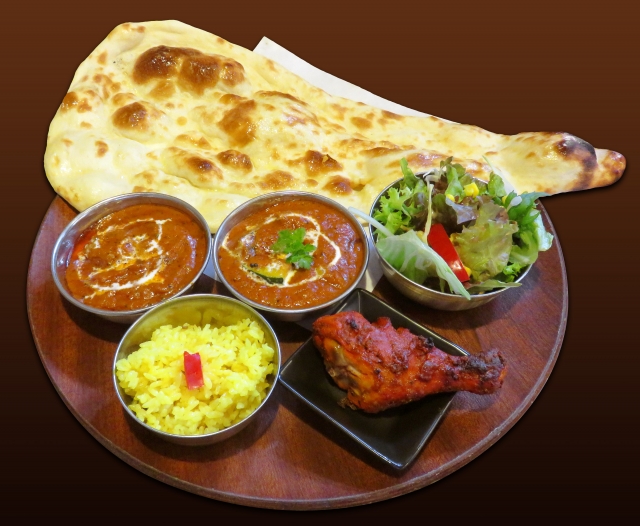
Naan is a special dish for Indians
While Indian food is often associated with naan and curry, what Indians actually eat every day at home is actually a type of bread called “chapati,” not naan. Making naan requires a tandoor oven, which is expensive, and the wheat flour used is considered expensive by Indians, making it a rare dish in the home. For this reason, naan is considered a special dish eaten in restaurants.
What’s the difference between naan and chapati?
You may be wondering what kind of bread chapati, the staple food in India, is.
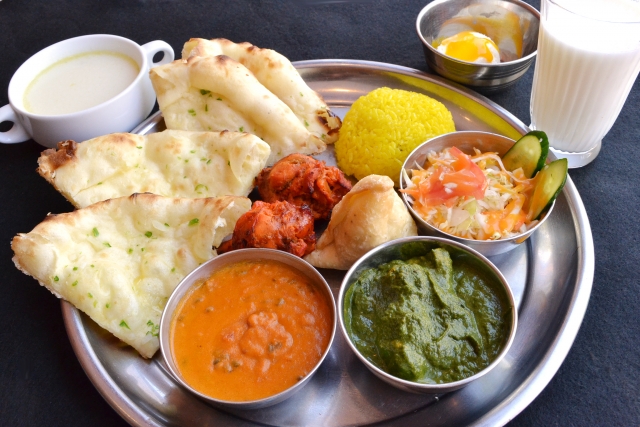
The differences between naan and chapati are summarized in the table below.
| Item | Naan | Chapati |
|---|---|---|
| Baking Instructions | Baked in a high-temperature oven Crispy on the outside, chewy on the inside |
Baked in a frying pan Thin and crispy texture |
| Ingredients | Flour, yogurt, butter, etc. | Whole wheat flour, water, salt |
| When to eat | Restaurants and special occasions | Every day |
| Fermented | Yes | No |
Chapati is a traditional food that has been eaten in India since ancient times. Its home-cooked flavor is deeply rooted in people’s hearts. It’s made simply by mixing whole wheat flour with water and salt, kneading it, and baking it. It’s also low in calories and rich in dietary fiber.
In Southern India, rice, not bread, is the staple food.
Not all regions of India have naan or chapati as staple foods. In some areas, rice is the staple food. Breads such as naan and chapati are mainly eaten in northern India, while in southern India, where wheat is not widely grown, rice is eaten as a staple food.
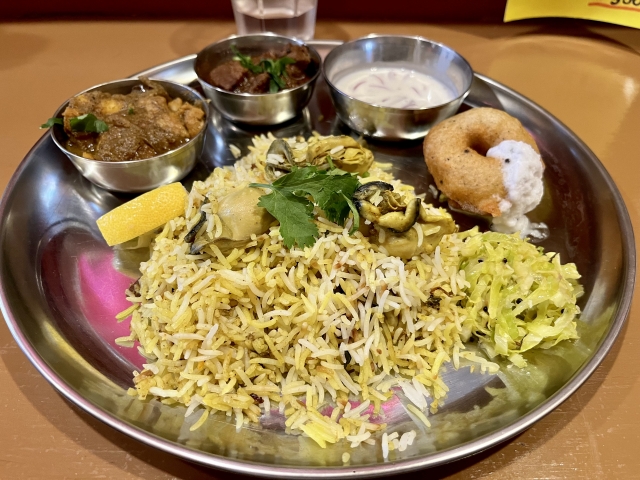
The table below summarizes the differences between ingredients and cooking methods in North and South India.
| Item | North India | South India |
|---|---|---|
| Staple Food | Wheat bread (naan, chapati, etc.) is the norm. Tandoor-baked dishes are a specialty. | Rice is the staple food. Basmati and other long-grain rice are used, resulting in a light, dry texture. |
| Spices | Made with a rich, fragrant spice blend, including garam masala. | Coconut milk, mustard seeds, and curry leaves create a refreshing flavor. |
| Other | Many meat dishes and dairy products. | Many vegetable dishes and fermented foods made with rice flour. |
The History of Naan in Japan
The history of naan in Japan began around the time authentic Indian restaurants began appearing in the late 1960s and 1970s. Initially, naan was baked in traditional earthenware tandoor ovens, which limited the amount and size that could be baked at one time. However, thanks to Japanese technology, large-capacity tandoor ovens were developed, allowing naan to grow in size and come in a variety of shapes.
Furthermore, in line with Japanese food culture, unlike plain Indian naan, toppings such as cheese and garlic have been added, allowing for a variety of flavors to be enjoyed. Cheese naan and garlic naan in particular are popular as they suit Japanese tastes.
The reasons why Japanese people love naan are its diverse flavors, chewy texture, and how well it pairs with curry. Another reason for its popularity is the visual appeal of the large naan being brought to the table, which adds a touch of elegance to any meal. The fact that naan is now easily available has also helped to boost its popularity.
Types of bread other than naan and chapati available in India
Bread, which is eaten mainly in North India, varies greatly depending on the region and culture, each with its own unique characteristics. In addition to the commonly known naan, many other types of bread adorn the Indian dining table. Here, we will introduce types of bread other than naan and chapati that are eaten in India.
Paratha
This bread is made by rolling out chapati dough, stacking it in layers, and then rolling it out thinly and baking it. By spreading butter or ghee (melted butter from which impurities such as protein have been removed) on it and baking it, it becomes crispy on the outside and fluffy on the inside. You can also enjoy it with fillings inside.
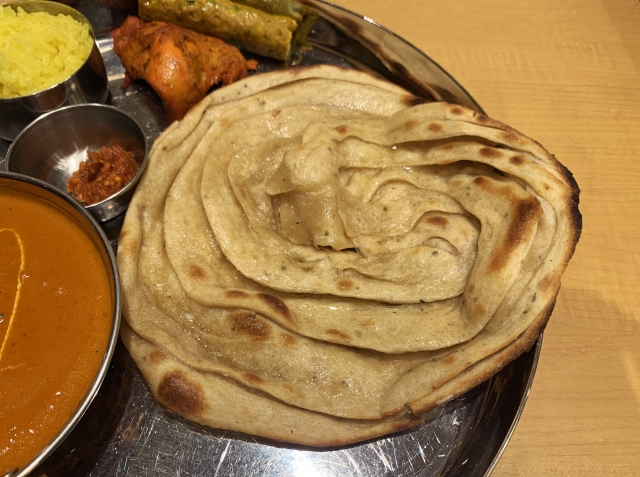
Puri
This fried bread is made by rolling out whole wheat dough into a thin circle and deep-frying it. The crispy texture of freshly fried puri is irresistible. It pairs well with a variety of curries and vegetable dishes.
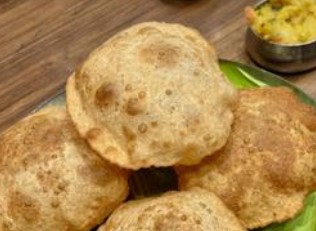
Dosa
Dosa is a signature dish of South Indian cuisine. It’s a crepe-like bread made from fermented rice and lentil batter. It’s a popular breakfast dish in South India. Enjoy it with sambar or chutney.
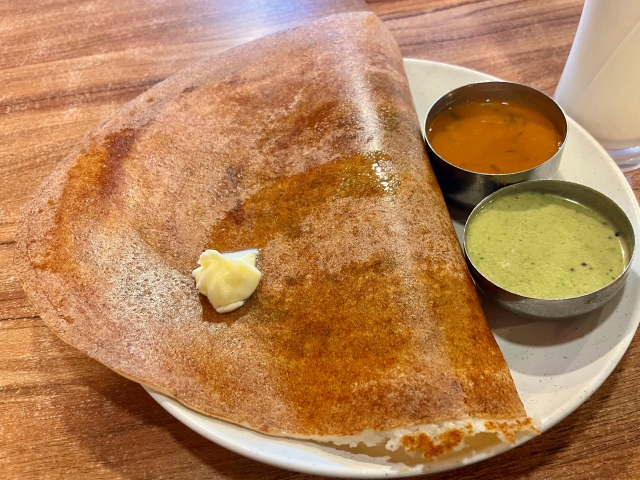
Bhatura
Bhatura is a deep-fried naan dough. It is a thicker fried bread than a poori. It is popular with chana masala.
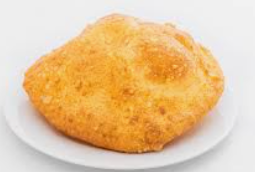
Sheermal
Sheermal is a sweet naan bread found in northern India and Iran. Made with sugar, saffron, cardamom, and warm milk, it’s rich in flavor. Recommended for those who like sweet breads.
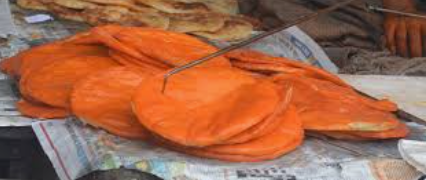
Kulcha
Kulcha is a type of naan dough wrapped around fillings such as cheese and potatoes, flattened into a round shape, and baked. It’s eaten with curry and other dishes. It’s primarily eaten in North India, where it’s baked in a tandoor oven.
-145551.jpg)
How to Make Authentic Indian Naan
You’ve probably wondered how naan is made in India.
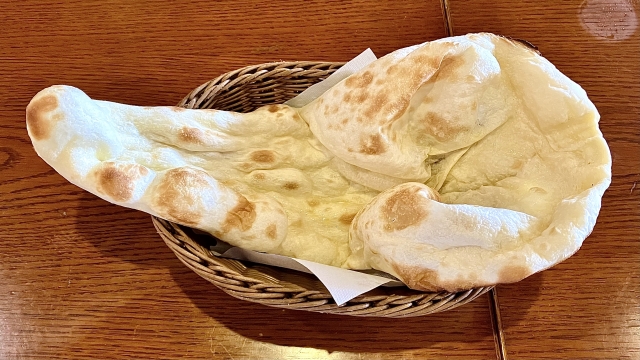
Here we will introduce the typical way naan is made in India.
1. Mix flour with water and salt, then add leavening agents such as baking soda and baking powder. Add yogurt or milk to taste to complete the dough.
2. Leave the dough at room temperature for a few hours to allow it to rise naturally.
3. Shape the rested dough into a flat circle, stick it to the inside of a tandoor oven, and bake for about a few dozen seconds.
Tandoor ovens have a strong heat, allowing naan to be cooked to a golden brown even in a short time. Also, while the naan known in Japan has a distinctive teardrop shape, in India it is generally made in a circular shape.
Make authentic naan at home! Recipe and tips
Actually, you can make authentic naan at home. Here’s how to make naan without using a tandoor oven.
The ingredients you will need are listed below.
- 200g all-purpose flour (or bread flour)
- 1/2 teaspoon salt
- 1 teaspoon sugar
- 1 teaspoon dry yeast
- 80ml warm water (approximately 40°C)
- 1 tablespoon ghee (or butter)
- 2 tablespoons plain yogurt
- 2 tablespoons milk (or water)
- A little salad oil (for frying)
[Naan Making Steps]
- Activate the Yeast
- In a small bowl, combine warm water, sugar, and dry yeast and mix gently.
- Cover loosely with plastic wrap and let sit in a warm place for 5-10 minutes.
- When bubbles appear on the surface, the yeast is activated.
- Knead the Dough
- Mix the flour and salt in a large bowl.
- Add the yeast mixture from step 1, ghee, yogurt, and milk, and fold in a cutting motion with a rubber spatula.
- Once the dough has come together, remove it from the bowl and place it on a work surface and begin kneading it with your hands.
- Knead the dough for 5 to 7 minutes, until it becomes smooth and as soft as an earlobe.
- First rise
- Roll the kneaded dough into a ball and return it to the bowl.
- Cover with plastic wrap and let rise in a warm place for 1 to 1.5 hours.
- The dough is ready when it has doubled in size.
- Second Proof
- After the dough has finished proofing, lightly press it down to release any gas and divide it into two equal parts.
- Form each portion into balls and let it rest for another 15 minutes (second proofing).
- Shaping
- Roll the rested dough thinly with a rolling pin.
- Roll it out to a uniform thickness, making sure it’s slightly thicker in the center.
- Bake
- Add salad oil to a frying pan and heat over medium heat.
- Place the batter in the frying pan, cover, and cook over low heat for 2-3 minutes.
- Once one side is cooked, flip it over and cook for another 2-3 minutes.
- Once cooked, brush with butter or ghee and it’s done.
Tips for Making Delicious Naan
When making naan at home, keep the following points in mind.
・Kneading: Kneading the dough thoroughly will help form gluten, resulting in a chewy texture.
・Rising temperature: The ideal fermentation temperature is 25-30°C.
・Baking time: Baking time will vary depending on the heat and the thickness of the dough. Keep an eye on it to prevent burning.
・Substitute for a tandoor oven: In addition to a frying pan, you can also bake naan in an oven or fish grill.
Use the recipes introduced here to try making delicious naan at home!
How to Make Chapati, a Traditional Indian Bread
Indian households enjoy chapati, which is easier to make than naan.
Chapati is a thin, crepe-like, round crust about 12 cm in diameter. Its light texture and fluffy finish make it a delightful treat.
Chapatis are made using whole wheat flour (known as atta), and generally only require whole wheat flour, water, and salt.
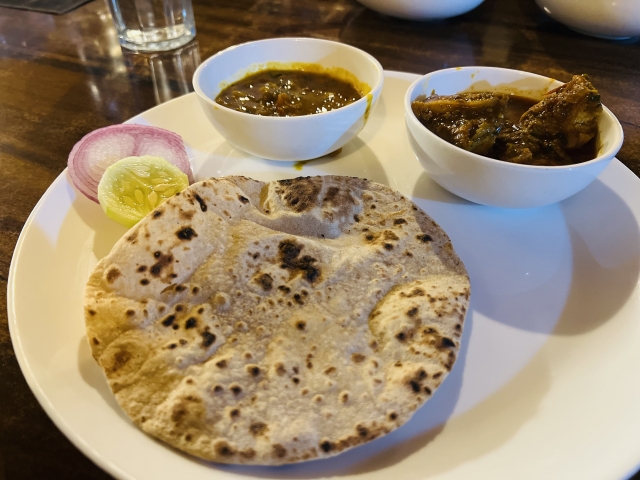
The typical steps for making it in India are as follows:
1. Add salt and water to whole wheat flour and mix quickly. Form the dough into a ball, cover with plastic wrap, and let it rest for about 30 minutes.
2. Divide the dough into individual pieces and roll them into balls. Flatten the balls with a rolling pin.
3. Fry both sides in a frying pan without adding oil.
If you have a tandoor oven, bake the dough in the same way as you would naan.
Try Making Chapatis at Home
Chapatis are easy to make at home. They can be made with ingredients readily available at the supermarket, so be sure to give it a try!
- 150g whole wheat flour
- A pinch of salt
- 1 tablespoon olive oil
- 100cc water
[Recipe]
- Put whole wheat flour, salt, and olive oil in a bowl, and gradually add water while mixing until the dough is no longer lumpy.
[Tip] The amount of water will vary depending on the condition of the whole wheat flour and humidity, so add water little by little until the dough comes together. - Turn the dough onto a board and knead for about 15 minutes until smooth.
[Tip] Continue kneading gently until the dough is smooth and has an elasticity similar to that of an earlobe. - Cover with a damp cloth and let it rest for about 30 minutes.
[Tip] Letting the dough rest will improve its elasticity and make it plump. - Divide the dough into 6 equal parts and roll them into balls. Use a rolling pin to roll them out into circles about 15cm in diameter.
[Tip] Make sure the thickness is uniform. - Add ④ to a frying pan without adding oil. Gently press down on the dough with a spatula, moving slowly to prevent burning, and cook evenly on both sides. When small bubbles appear on the surface, cook slowly over low heat until the entire surface is puffy and golden brown, then remove from the oven. Repeat this process to cook a total of 6 slices.
[Tip] Bake each one individually. If you do it well, they’ll get bigger.
Naan and Chapati Recipe Ideas
Next, we’ll introduce some naan and chapati recipe ideas. If you’d like to try making them for purposes other than curry, please check them out.
Naan Dogs with Addictive Aurora Sauce
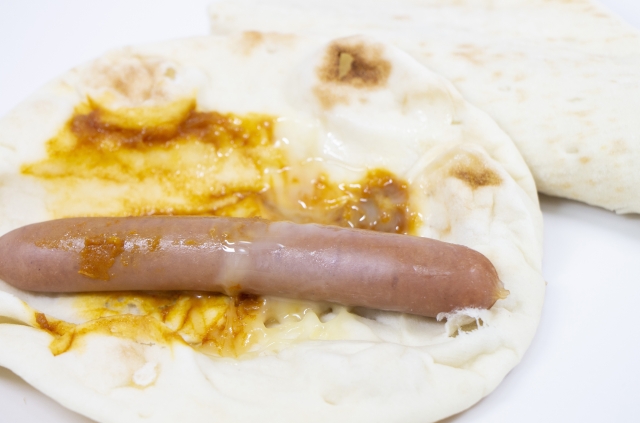
Ingredients (serves 2)
- 2 slices of naan
- 2 long sausages
- 1 lettuce leaf
- 2 cherry tomatoes
- Salad oil (as needed)
- 1 tablespoon mayonnaise
- 2 tablespoons ketchup
- 1 teaspoon Worcestershire sauce
Steps
- Shred the lettuce and quarter the cherry tomatoes.
- Mix mayonnaise, ketchup, and Worcestershire sauce in a bowl.
- Add salad oil to a frying pan and fry the naan and sausage. Cook over medium heat for about 3 minutes until golden brown.
- Arrange the lettuce, sausage, and cherry tomatoes on top of the naan, then pour the sauce over them and you’re done.
Roast Beef Tortillas Made with Chapatis
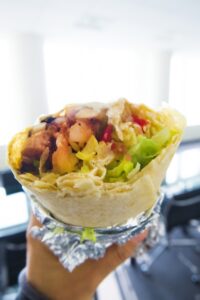
- 1 chapati
- 1 sunny lettuce leaf
- Mayonnaise (as needed)
- 3-5 slices of roast beef (shredded)
- 1/4 teaspoon roast beef sauce
- 2 slices of avocado (shredded)
- 1 cherry tomato
- 5 red cabbage sprouts
[Recipe]
- Cook the chapati in a heated frying pan for 2 minutes on one side, then flip and cook for 1 minute.
- Place 5-10cm pieces of sunny lettuce on top of the cooked chapati and drizzle with mayonnaise.
- Place the roast beef on top of 2 and pour the roast beef sauce over it.
- Place the avocado, cherry tomatoes, and red cabbage sprouts on top of 3.
- Slightly fold in both ends of 4, then roll up the filling from the bottom.
- Wrap 5 in aluminum foil.
- Twist both ends and you’re done.
What curry pairs well with naan?
The appeal of naan is that it combines a thick, chewy dough with a crispy, puffy texture in one piece. When choosing a curry to pair with naan, keep three things in mind:
- A rich, thick curry that clings well to the naan.
- A mild curry that brings out the sweetness of the naan.
- A curry with small, easy-to-eat ingredients.
Taking the above three points into consideration, we will introduce curries that go well with naan.
Rich and mild flavor! Butter chicken curry
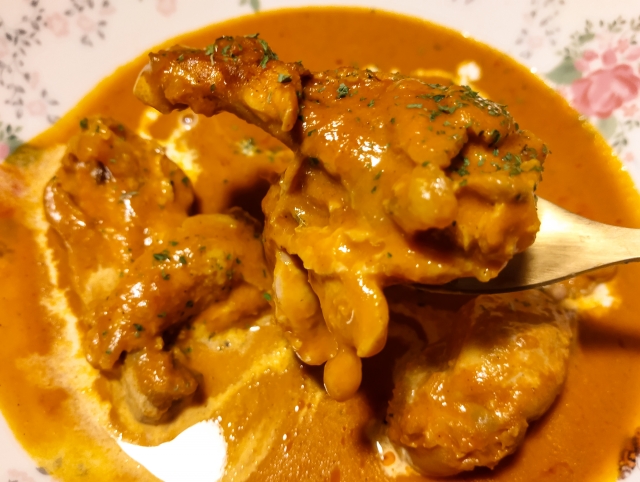
The rich curry sauce pairs perfectly with naan. Adding garam masala to the chicken gives it a spicy kick.
This creamy curry pairs perfectly with naan! Shrimp and coconut ethnic curry
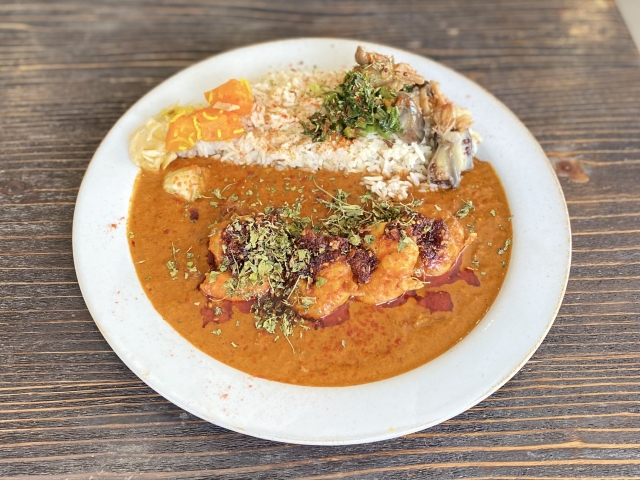
This seafood curry is made with fresh, plump shrimp and the richness of coconut milk adds depth to the dish. The combination with the sweet and soft naan is truly delicious.
Easy curry with sausages
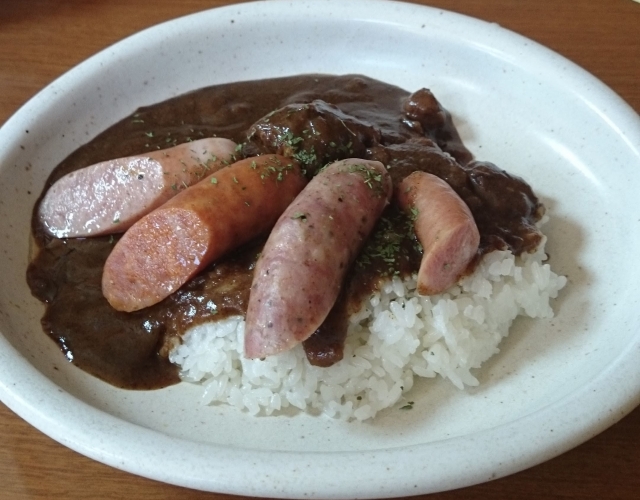
This curry uses ingredients that require almost no preparation, such as Vienna sausages, cherry tomatoes, shimeji mushrooms, and quail eggs, making it easy to make yet boasting a rich flavor. It also pairs perfectly with naan.
Dal curry made with lentils
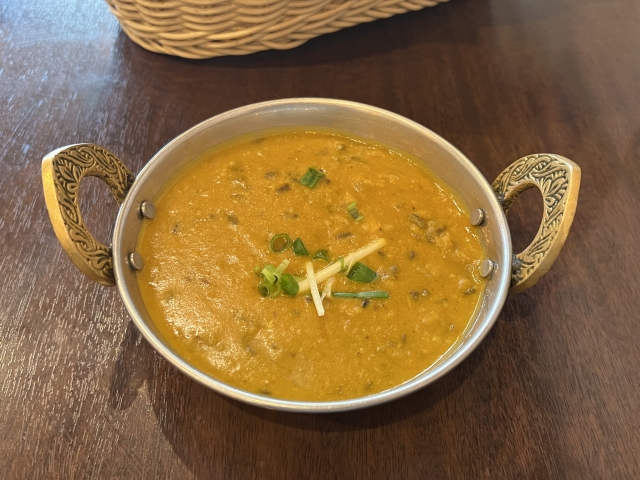
This healthy curry is made with lentils, rich in fiber and protein. It requires little cooking time and is delicious and easy to prepare. The sweetness of the lentils and naan complements the spiciness of the spices perfectly.
Bread Dishes Served in Homes Around the World
Like naan, there are many bread dishes commonly enjoyed in homes around the world. We’ll introduce some of the most popular ones by country.
| Country | Dish name | Photos | Features |
|---|---|---|---|
| Middle East Asia | Pita |
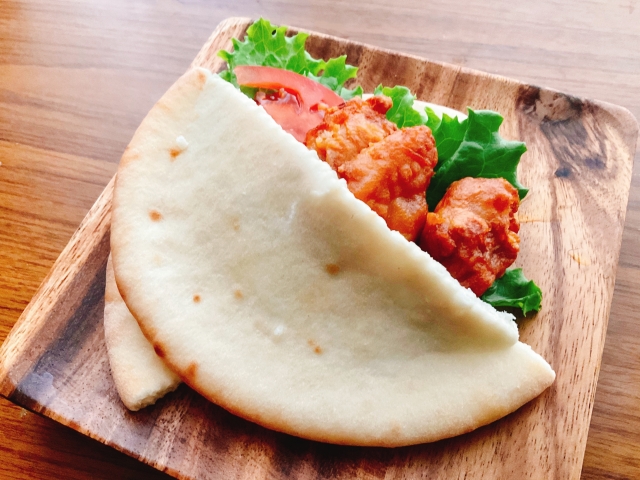 |
The dough is made with flour, yeast, water, sugar, and salt, and baked in a high-temperature oven. When baked, a hollow center is left, which can be filled with fillings. |
| West Asia | Lavash |
 |
The dough is made with flour, yeast, water, sugar, and salt, and baked in a high-temperature oven. When baked, a hollow center is left, which can be filled with fillings. |
| West Asia | Lavash |
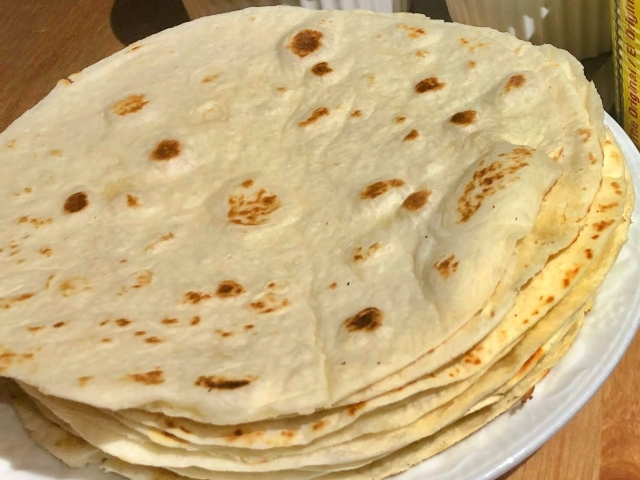 |
It’s made from corn flour or wheat flour in a crepe-like shape. It’s famous for its fillings wrapped around tacos. |
| Italy | Focaccia |
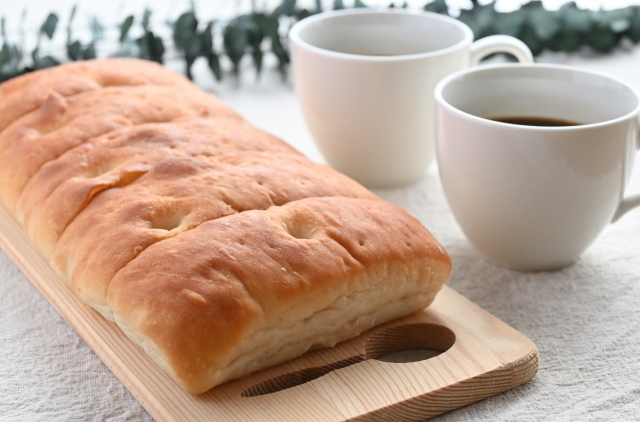 |
Ingredients include strong flour, sugar, salt, dry yeast, water, and olive oil. The dough is rolled out, indented with your fingers, and baked in the oven. It can be eaten as is, or filled with meat or vegetables and eaten like a sandwich. |
| Italy | Pizza |
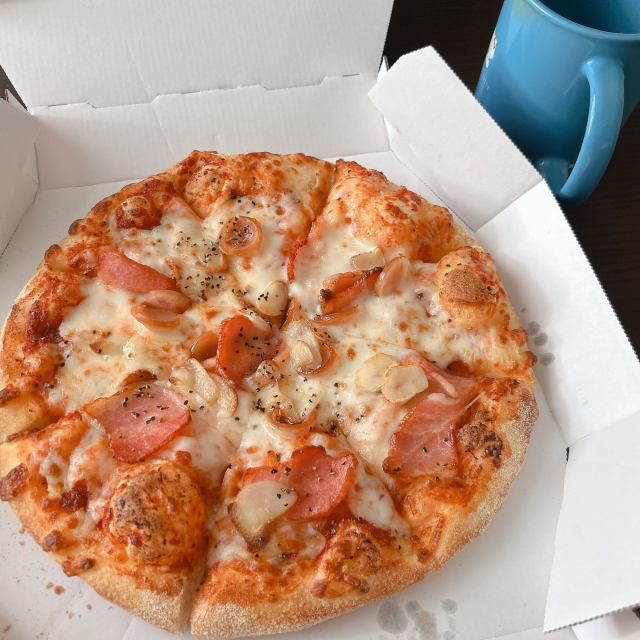 |
Flour, salt, water, salt, and dry yeast are kneaded, and the dough is left to rise, which is then rolled out thinly and topped with tomatoes, cheese, vegetables, etc., and baked in an oven or kiln. |
Summary
In Japan, Indian curry is often associated with naan, but in India, naan is considered a luxury dish, eaten in restaurants. For this reason, the average Indian household eats the simple, rustic-tasting chapati instead of naan as their staple food.
Naan and chapati can be made at home, so why not give it a try?


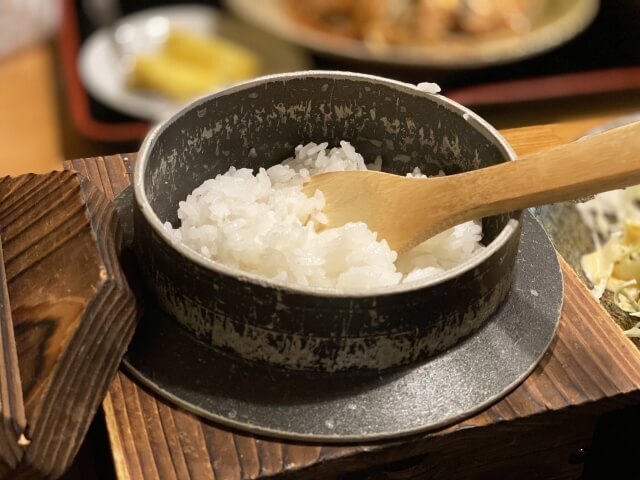
![[Yamagata’s local cuisine] “Hippari udon” is recommended in the summer! “Chilled” recipe on hot days’ cooking アイキャッチ](https://bongheiberg.yamagata.jp/wp-content/uploads/2025/09/29523048_m.jpg)
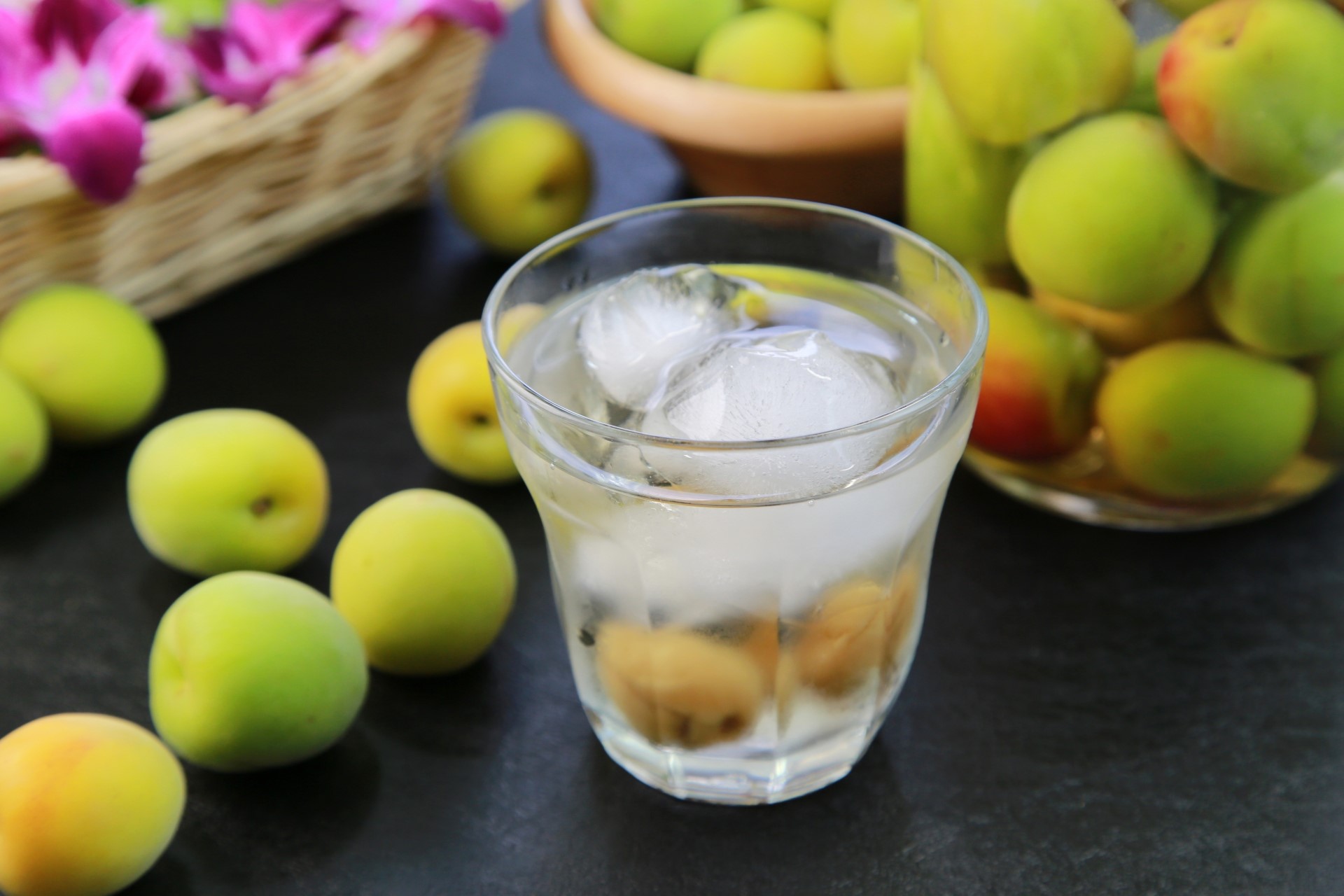
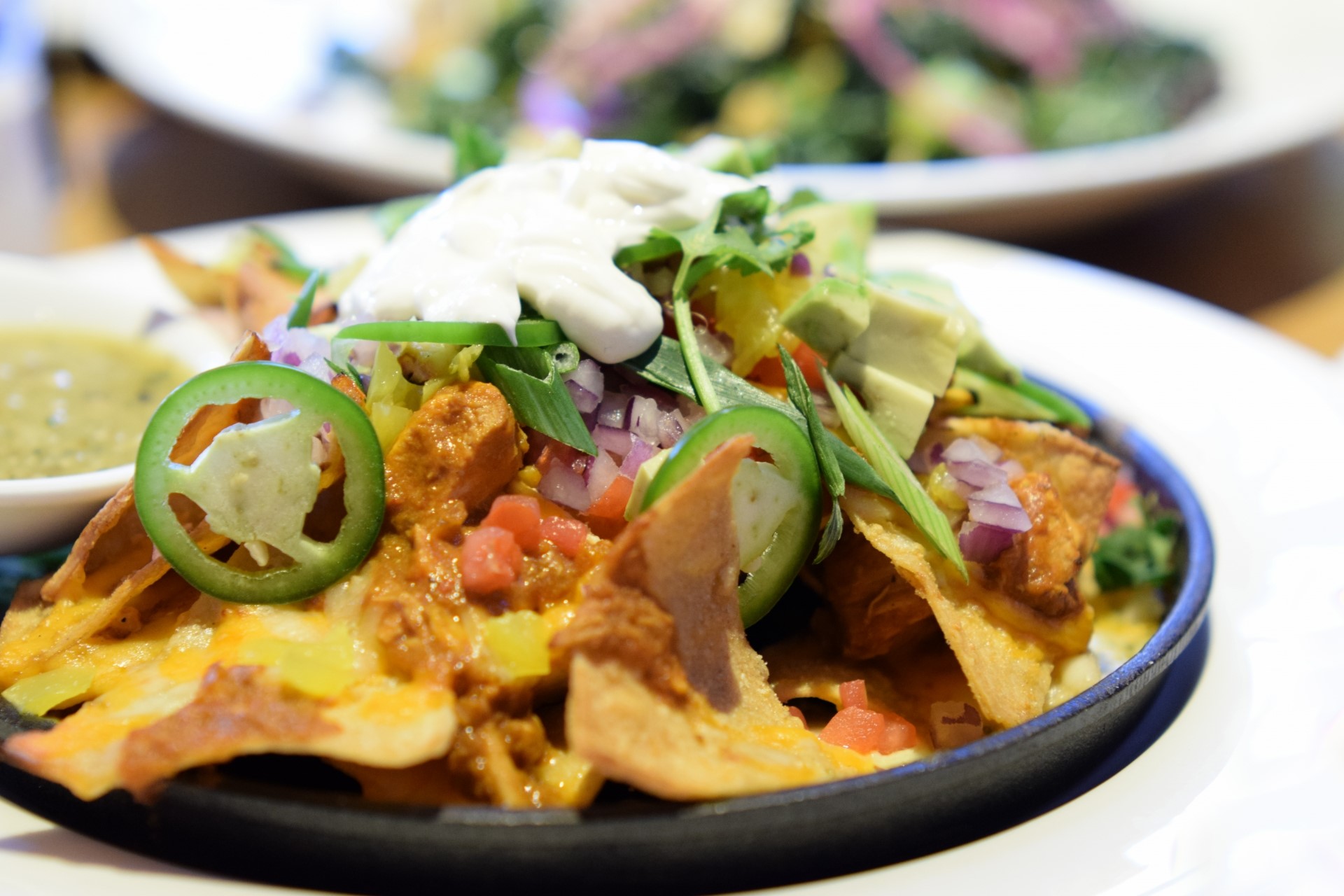
![[Reviews] Adding vinegar to ramen makes it refreshing and increases its health benefits! アイキャッチ](https://bongheiberg.yamagata.jp/wp-content/uploads/2025/09/ramen_to_su.png)
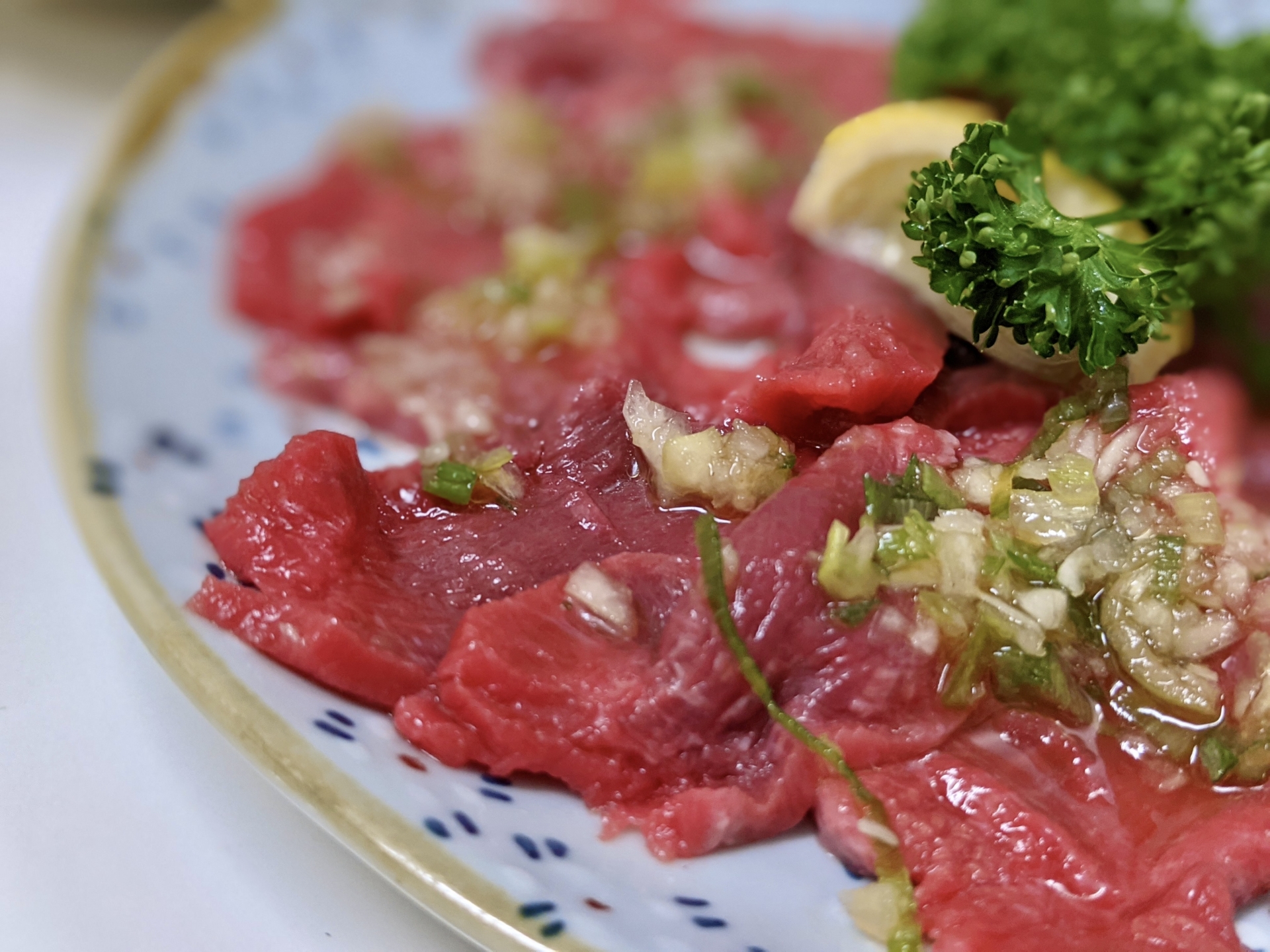
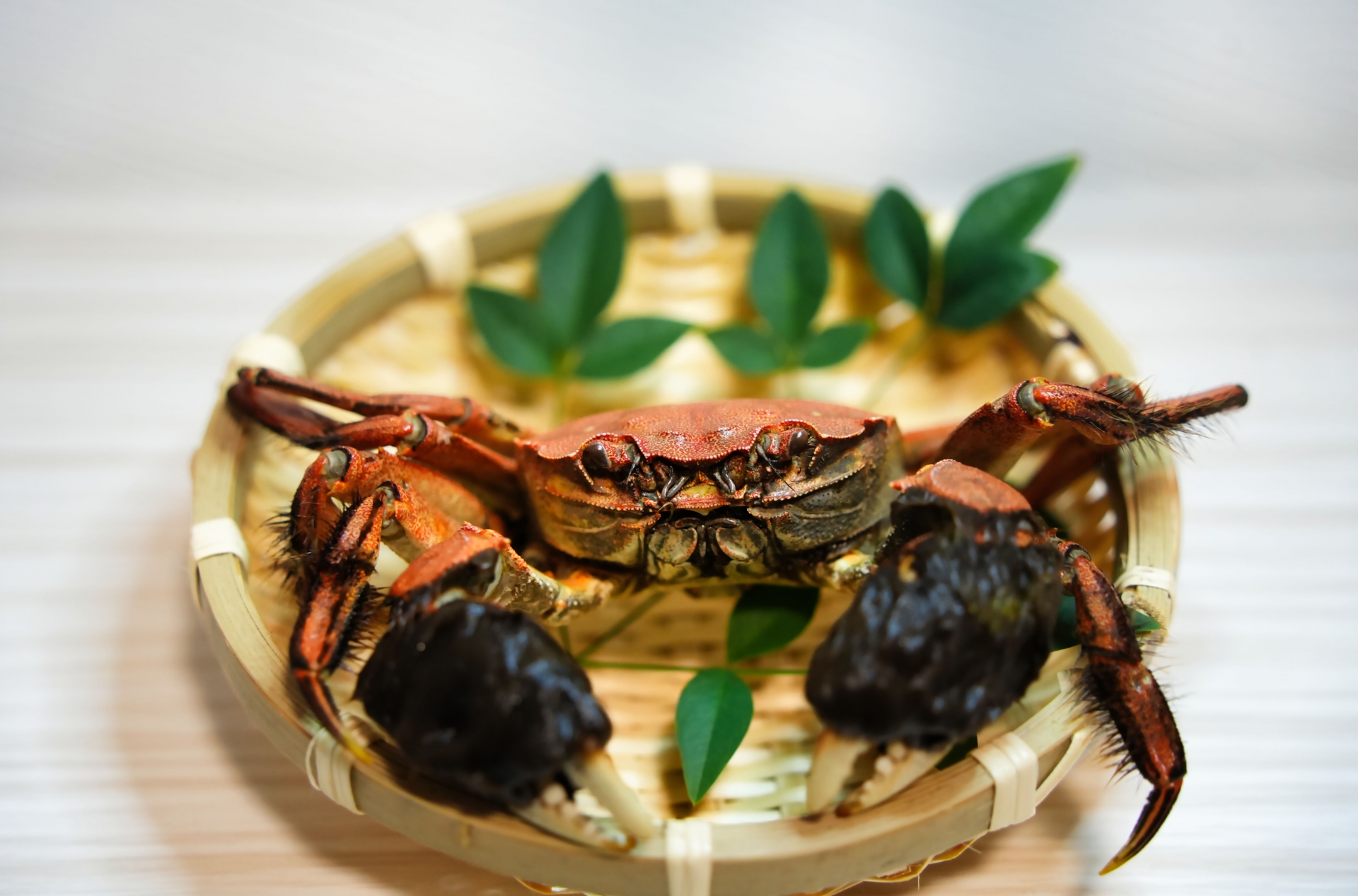
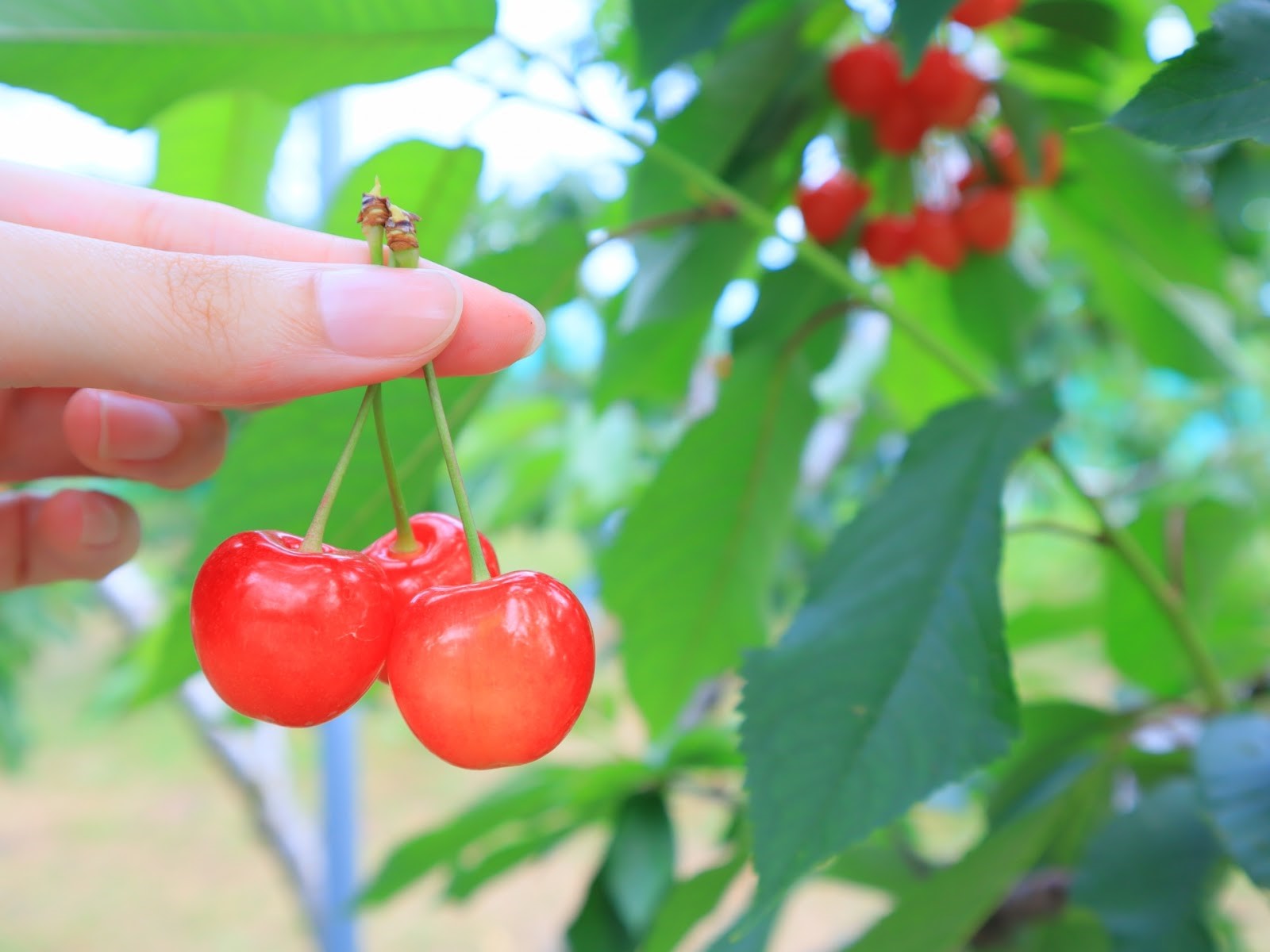

![[Yamagata, Tendo] Enjoy authentic gelato at the sports park! Made by Italian-trained artisans at “COZAB GELATO” アイキャッチ](https://bongheiberg.yamagata.jp/wp-content/uploads/2025/09/top-scaled.jpg)


![[Yamagata, Shonai] Kumagaya Shrine, the birthplace of Kamenoo | Learn about the life of Kumagai Saburobei, the god アイキャッチ](https://bongheiberg.yamagata.jp/wp-content/uploads/2025/09/熊谷神社.jpg)
![[Yamagata, Tozawa] “Roadside Station Tozawa Kouraikan” Experience of traveling Korea | Korean gourmet food, and souvenirs アイキャッチ](https://bongheiberg.yamagata.jp/wp-content/uploads/2025/10/道の駅とざわ_高麗館9-1.png)
![[Yamagata, Murayama] Link MURAYAMA’s pizza shop “pizza nu-ma” | Delicious pizza tasting report アイキャッチ](https://bongheiberg.yamagata.jp/wp-content/uploads/2025/09/pizza-nu-ma7.png)